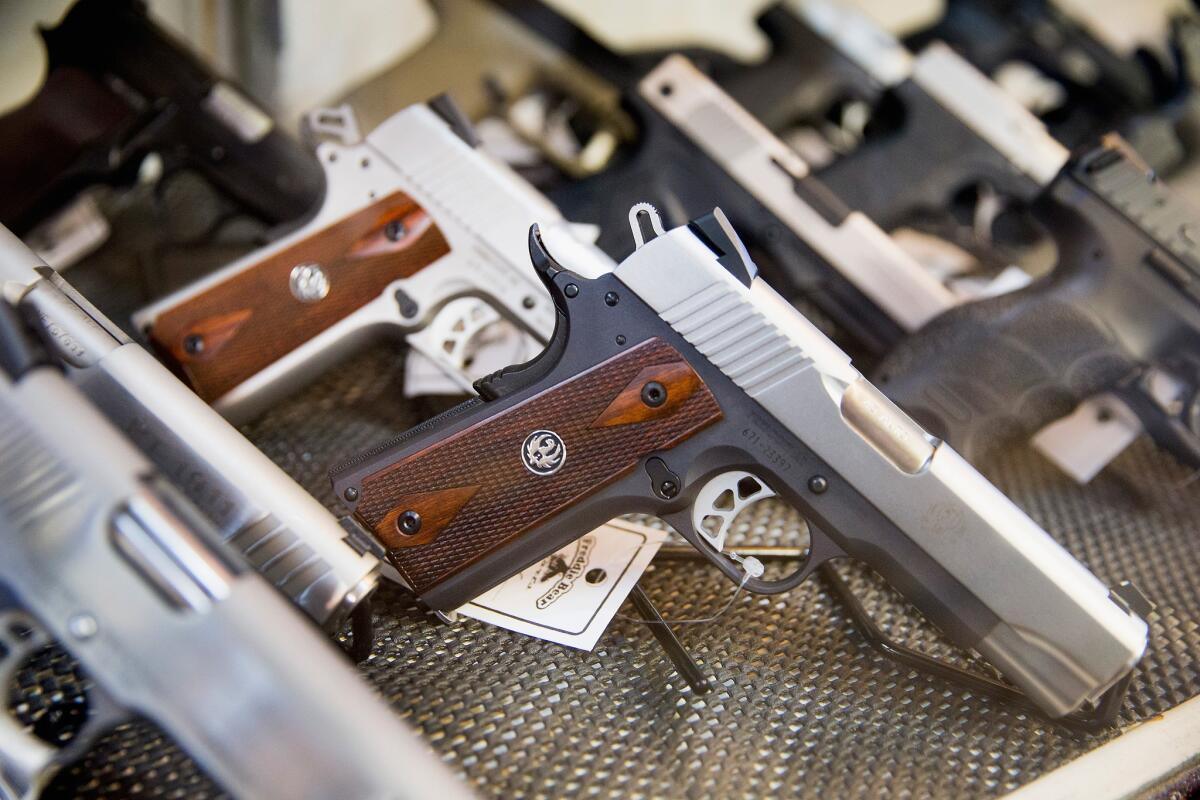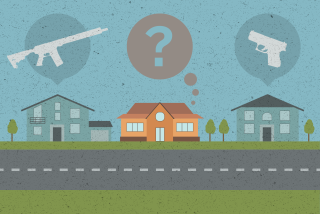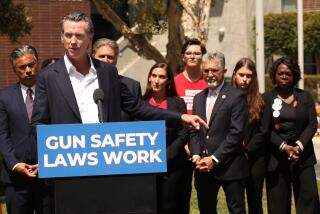Opinion: Studies: States with easier access to firearms have higher suicide rates

A couple of new, related studies affirm that states with laws restricting access to firearms also have lower rates of suicides committed with guns, and lower overall suicide rates.
More than half of the nation’s 41,000 suicides each year are committed by people using guns, so it shouldn’t be all that surprising that two new, related studies find that states with stricter gun control laws tend to have both lower rates of suicides using guns, and lower overall rates of suicides.
In other words, states where access to firearms is easier have higher rates of suicide.
The reports, published (behind a subscription wall) this month in the American Journal of Public Health, looked at seven types of gun laws. The first study looked at states with four laws requiring waiting periods and universal background checks before a purchase can be made, mandating gun locks and limiting the ability to openly carry a weapon.
“The four pieces of handgun legislation we examined were associated with a significant reduction in the number of lives lost annually to suicide in the United States,” the authors wrote. “For example, the percentage of statewide suicide deaths by firearms dropped from 53.4% in states that did not have gun lock requirements to 28.5% in states with such requirements.”
The second study, which involved a different group of researchers but the same lead author, Michael D. Anestis of the University of Southern Mississippi, looked at the effects of three other types of gun laws, those requiring a permit to purchase a handgun, a license to own one and mandatory registration of handguns. Again, states with such laws had lower gun-related suicide rates. But the authors also acknowledge other unknown variables may have exerted some influence, as well, and more detailed analysis would be useful.
“Although conclusions drawn from exploratory analyses should be considered with caution, it should be noted that, in the years immediately after implementing a law requiring a license to own handguns, both California and Maryland saw a decrease in their suicide rates whereas the United States as a whole and states that either did or did not have such laws in place throughout that time period saw a continued increase,” the authors wrote. “Our results provide support for the possibility that legislation limiting access to handguns may have an impact on suicide rates as a whole.”
Key to both studies is the affirmation that limiting access to handguns makes it less likely someone will succeed in killing himself. And it usually is a man — the suicide rate among men is four times that of women. White men account for around 70% of all suicides.
A Harvard project lays out more context for the argument that ready access to a firearm increases the likelihood of suicide for a variety of reasons, including the speed and efficiency of a shooting suicide versus hanging or some other act in which the person can change his mind or seek help before dying.
An interesting detail gleaned from the reports: The states with the highest suicide rates, in descending order, are Wyoming, Alaska, Montana, Nevada, New Mexico, Idaho, Oregon, Colorado, South Dakota and Utah. Half of them are on the Brady Campaign to prevent Gun Violence’s 2013 list of the 10 state with the most lenient gun laws, and seven of the states with the highest suicide rates received F’s on the Brady scorecard for safe gun regulations.
And as Vox noted the other day in a graphic array of a wide range of gun-related studies, states with tighter gun control laws also have lower rates of gun-related deaths.
All of that is worth keeping in mind in the aftermath of yet another shooting incident with multiple victims, one that ended with the suicide of the gunman. The U.S., in fact, is the dominant world leader in mass shootings for a range of reasons as our colleague, Melissa Healy, wrote, including a “chronic and widespread gap between Americans’ expectations for themselves and their actual achievement, Americans’ adulation of fame, and the extent of gun ownership in the United States. Set those features against a circumstance the United States shares with many other countries — a backdrop of poorly managed mental illness — and you have a uniquely volatile brew, the new study says.”
So, access to firearms is a key factor in mass shootings as well as private suicides, leading to an annual death tally of more than 33,000 people (homicides and suicides combined). Isn’t it about time we started dealing with this reality?
Follow Scott Martelle on Twitter @smartelle.
More to Read
A cure for the common opinion
Get thought-provoking perspectives with our weekly newsletter.
You may occasionally receive promotional content from the Los Angeles Times.







